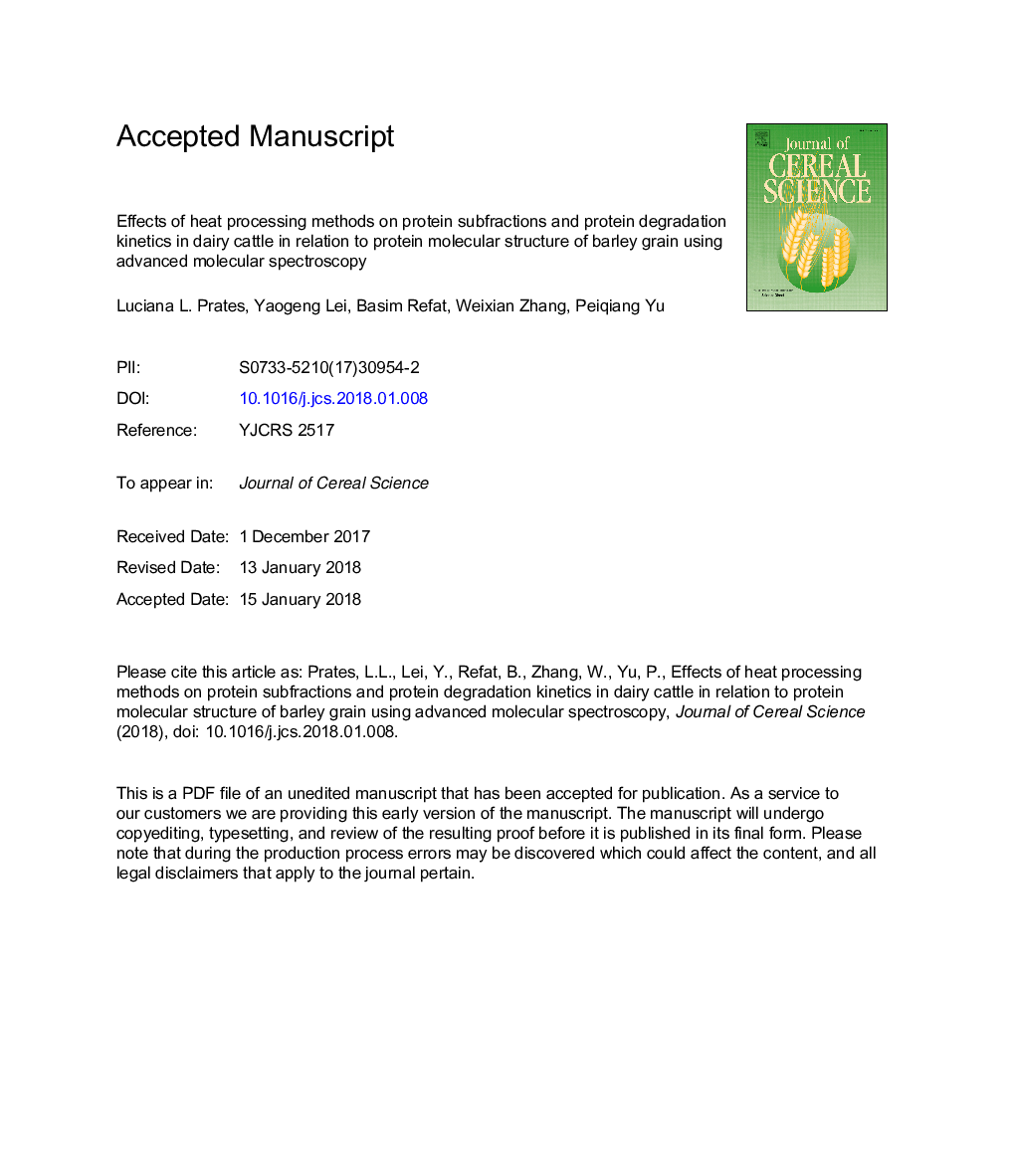| Article ID | Journal | Published Year | Pages | File Type |
|---|---|---|---|---|
| 8881433 | Journal of Cereal Science | 2018 | 35 Pages |
Abstract
The objectives of this study were: (1) to investigate the effect of three different heat processing methods on chemical profile, CNCPS protein subfraction, rumen degradation characteristics, and protein molecular structure of barley grain (CDC Meredith) using Fourier transform infrared attenuated total reflectance advanced molecular spectroscopy; (2) to detect association between protein degradation and availability and protein molecular structure profiles in dairy cows. The grains were kept as raw (control) or heated in an air-draft oven at 120â¯Â°C for 60min or in an autoclave at 120â¯Â°C for 60min or in a microwave at 900w for 5min. The results showed that autoclave heating decreased the ruminal effective degradability and increased the intestinal digestion of protein. The molecular spectroscopy was able to identify heating-induced changes in protein molecular structure, revealing that dry heating increased the amide I to II area ratio when compared with control. The α-helix to β-sheet ratio was greater in microwave heating than autoclave heating, suggesting protein damage in microwave-heated grains. The autoclave heating decreased the effective degradability of protein while increased the intestinal digestion of rumen undegradable protein. Protein subfractions, rumen degradable, undegradable and intestinal digestible protein fractions and degradation characteristics could be predicted by amide I area or α-helix.
Related Topics
Life Sciences
Agricultural and Biological Sciences
Agronomy and Crop Science
Authors
Luciana L. Prates, Yaogeng Lei, Basim Refat, Weixian Zhang, Peiqiang Yu,
